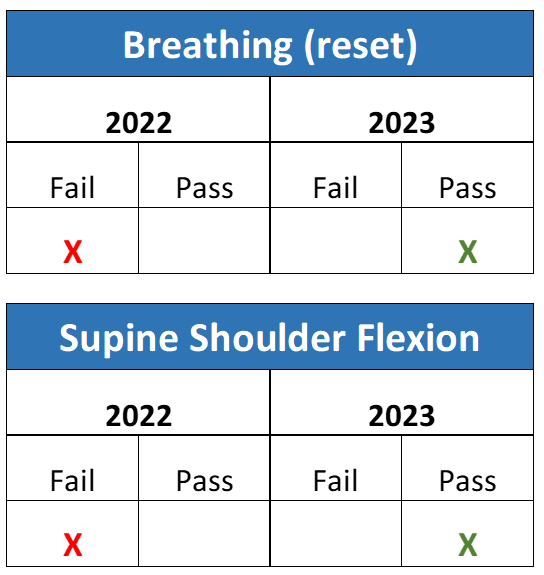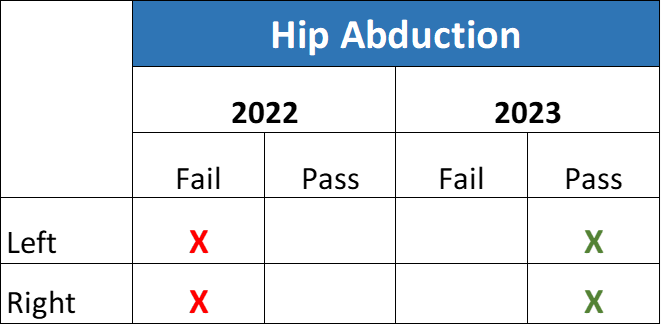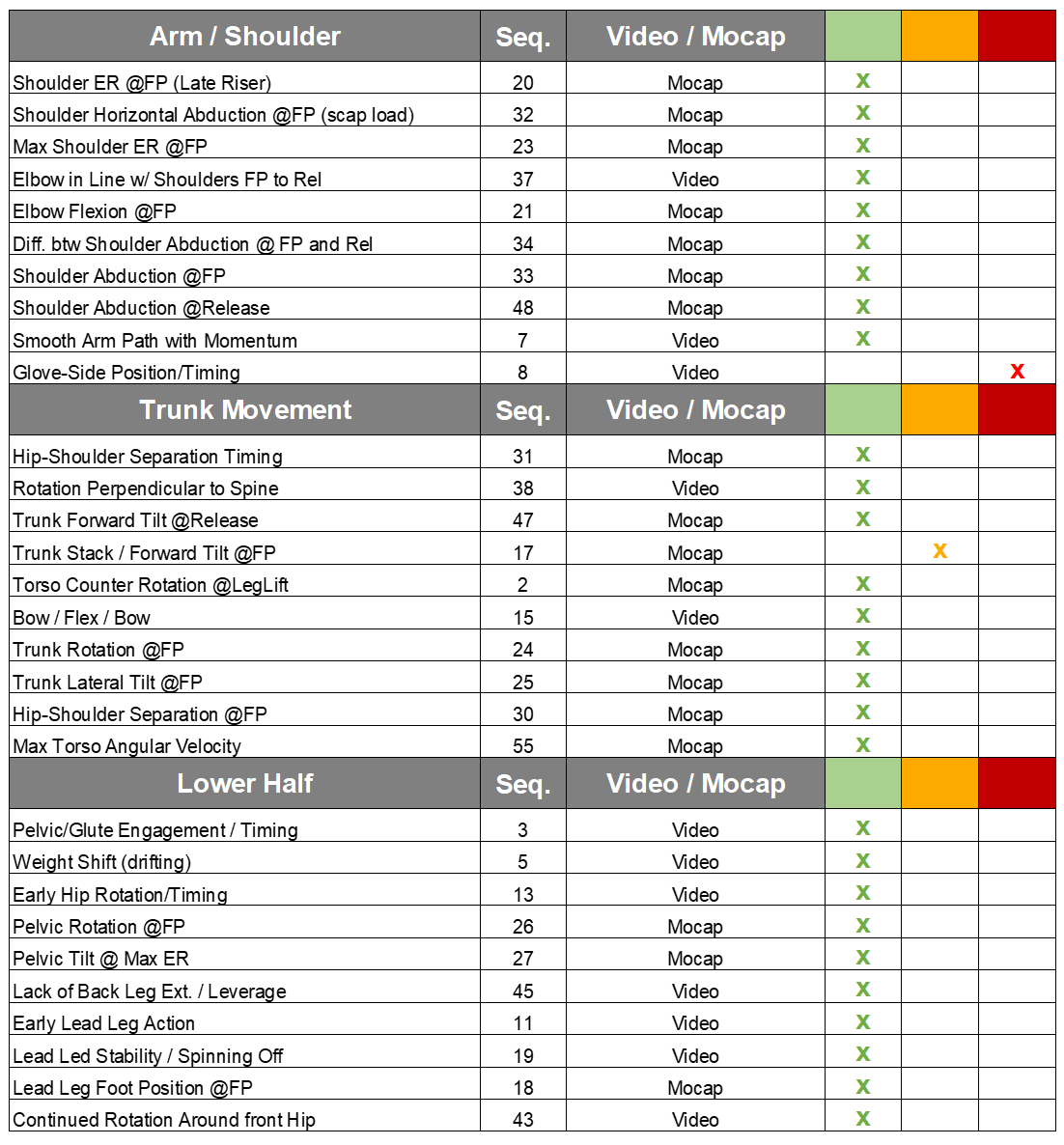
Presbyterian College commit Christian Charalambous finished his spring season with a 1.51 ERA touching 89 mph. Christian started his training at RPP over two years ago in November 2020, during his sophomore year at Bergen Catholic High School in Oradell, New Jersey. During the fall of that year, he was clocked at a Perfect Game event at 81 mph. Two years later and a spine fracture in between, he is now touching 89 mph.
How did he do it?
Although his training with us started in 2020, this summary will review his progress since his recovery from his back injury during the past year, in which he suffered a hairline fracture of both L3 and L4. Christian’s training last year began with an initial baseline assessment in June, which included the following:
-
- Lean Muscle Mass
- Movement Screen
- Video Analysis and Motion Capture
- Power Testing
Following the evaluation, we assembled a comprehensive plan, with the first plan of action being alleviating the discomfort in his lower lumbar so that he could begin to train harder and more aggressively down the road.
At the time of his assessment last June, Christian was 5’11” and weighed in at 190 lbs., which put his height to weight ratio at 2.7x at the time, well within our 2.5-3.0x target.
Getting athletes back from injury is a careful and coordinated process of isolation and progression. Below is a summary of what we felt should be the focus of his training in order to get him back into those efficient movement patterns he possessed prior to his injury.
Movement Screen
Christian’s assessment / movement screen highlighted several areas that needed to be addressed:
Chest Breather – The key to optimal performance as well as keeping ourselves out of debilitating back pain is how to control extension. You have to be really good proximally before you can be better distally” and training great breathing patterns are ground zero for dealing with most injuries, ESPECIALLY issues with the lumbar spine.
Tight Lats / Pec Minor – The lats help transfer force from the lower body to the upper half, control internal rotation as well as having a direct impact on lower lumbar extension /tightness.
Lumbar Extension – The culmination of poor breathing / ribcage positioning as well as pulling on the lower lumbar due to tight lats will cause excess lumbar extension, causing back pain as well as making it difficult to efficiently transfer force from the lower to the upper body when coming down the mound
Enter TRX Deep Squat Breathing. This exercise promotes LAT length while helping to keep the ribcage down in order to help facilitate better rotation without tweaking the lower back.
TRX Deep Squat Breathing
Below are the results of Christian’s mobility issues, both baseline from a year ago and a recent re-assessment. Creating better breathing patterns and getting more length in the lats relieved most symptoms within the first few weeks and allowed us to get to business in the weight room quickly.

Hip Abduction Strength – This stems from poor glute activation combined with inefficient core control. So, creating a stable core was first on the list in order to allow Christian to better fire from his center without compensating in his lower lumbar. We used Bird Dogs w/ Trap Raise to build core stability while continuing to train good shoulder abduction.
Bird Dog w/ Trap Raise

Strength and Power
Note: No weight room data was collected on Christian’s baseline assessment last year due to the fact that it was still too early after his injury. We did, however, begin patterning his lower half hinge in preparation for lifting heavier later in his program.
Cable Pull Through
RDL
We then progressed his core training by adding instability.
Slosh Pipe
Lower Half Power – After 6-8 weeks of lower half patterning and core work, we were able to begin lifting heavier which in turn had a positive effect on Christian’s power numbers year-over-year as shown below.
June 2022

June 2023

Pitching Mechanics (Motion Capture / Video Analysis)
Our video and motion capture analysis together looks at over 60 different disconnects, from arm action to trunk movement and lower half movement/timing patterns. It leaves nothing to chance, especially when it comes to including metrics such as angular velocities that can’t be seen efficiently by the naked eye. Below is a skelly from Christian’s mocap at last year’s evaluation.
Christian’s pitching and motion capture report from last summer pointed to very few disconnects. So few in fact that we really couldn’t attribute any mechanical issues to his performance metrics, making his movement Strategies all that much more important to address.

Recent Results
In a world where people seem to jump right into the old rant that “it’s his mechanics” or “it’s his lower half”, Christian is a great example of fixing the foundation before jumping right into repairing the roof. He has made significant strides since joining RPP and we’re really looking forward to what his freshman season at school will look like.
Well done Christian, we’ll miss you around the gym. Good luck at Presbyterian and keep up the great work!
See ya’ in the gym…
By Nunzio Signore and Bahram Shirazi
You live too far to train with us in-house at RPP? You can now train with us on a REMOTE basis.


